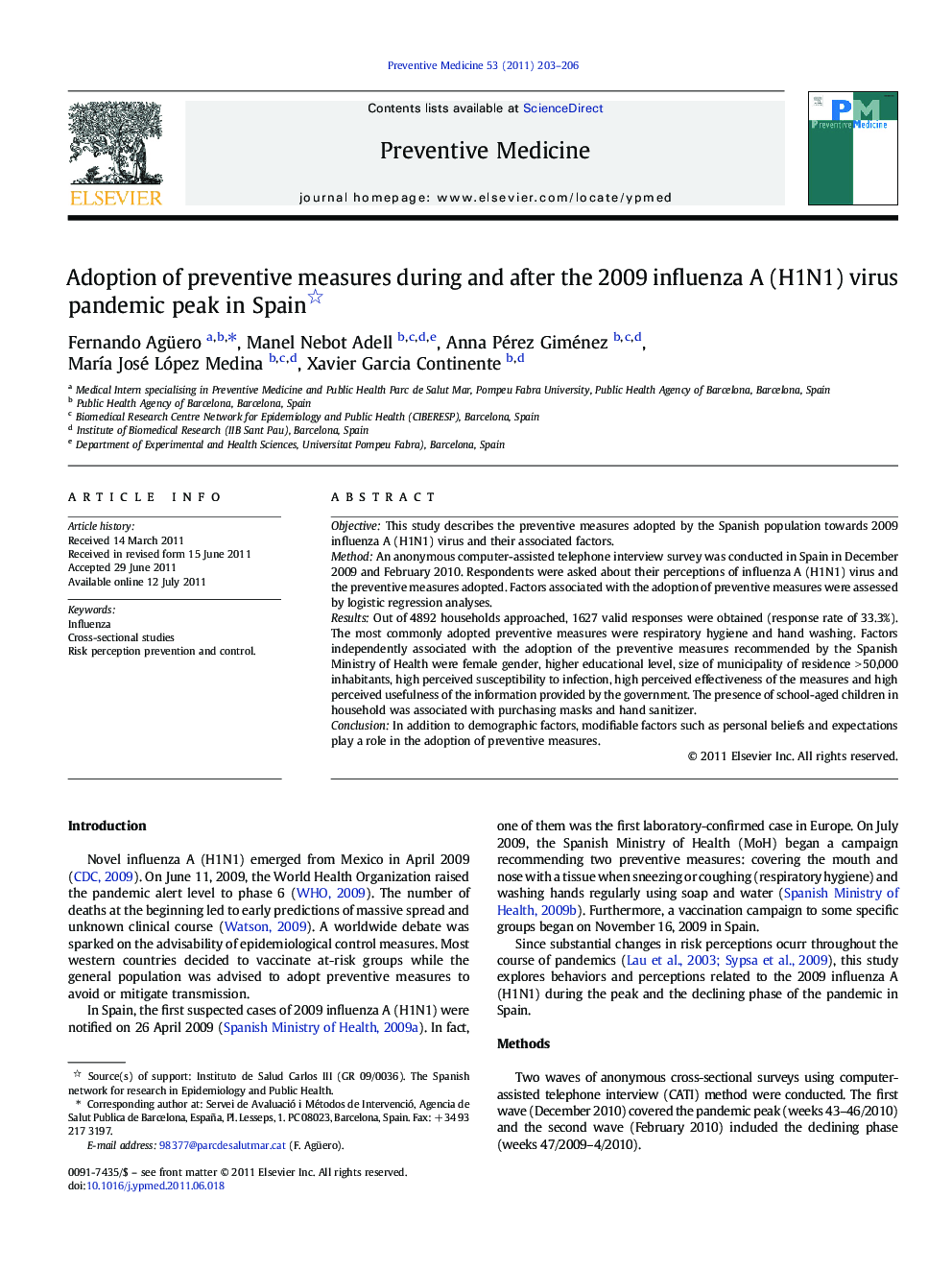| Article ID | Journal | Published Year | Pages | File Type |
|---|---|---|---|---|
| 3100745 | Preventive Medicine | 2011 | 4 Pages |
ObjectiveThis study describes the preventive measures adopted by the Spanish population towards 2009 influenza A (H1N1) virus and their associated factors.MethodAn anonymous computer-assisted telephone interview survey was conducted in Spain in December 2009 and February 2010. Respondents were asked about their perceptions of influenza A (H1N1) virus and the preventive measures adopted. Factors associated with the adoption of preventive measures were assessed by logistic regression analyses.ResultsOut of 4892 households approached, 1627 valid responses were obtained (response rate of 33.3%). The most commonly adopted preventive measures were respiratory hygiene and hand washing. Factors independently associated with the adoption of the preventive measures recommended by the Spanish Ministry of Health were female gender, higher educational level, size of municipality of residence > 50,000 inhabitants, high perceived susceptibility to infection, high perceived effectiveness of the measures and high perceived usefulness of the information provided by the government. The presence of school-aged children in household was associated with purchasing masks and hand sanitizer.ConclusionIn addition to demographic factors, modifiable factors such as personal beliefs and expectations play a role in the adoption of preventive measures.
